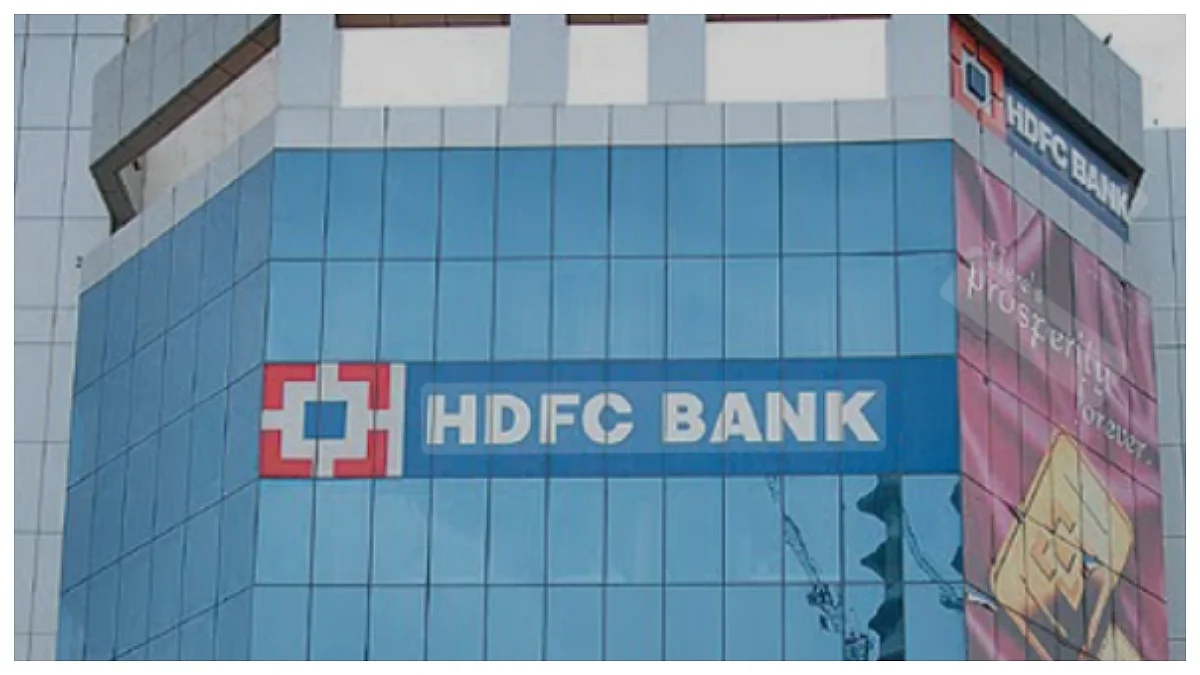The Reserve Bank of India's (RBI) Monetary Policy Committee has voted unanimously to keep policy repo rate unchanged at 4 percent and decided to continue with its accommodative stance in the backdrop of elevated level of inflation.
It was widely expected that MPC would hold rates and the accommodative stance.
Repo is the rate which the central bank lends short term funds to banks. Reverse repo is the rate at which the RBI borrows short-term deposits from banks.
This is the tenth time in a row that the Monetary Policy Committee (MPC) headed by RBI Governor Shaktikanta Das has maintained the status quo. The RBI had last revised its policy repo rate or the short-term lending rate on May 22, 2020 in an off-policy cycle to perk up demand by cutting the interest rate to a historic low.
This is the first MPC meeting after presentation of Budget 2022-23 in Parliament on February 1.
MPC has decided to keep benchmark repurchase (repo) rate at 4 per cent, Das said while announcing the bi-monthly monetary policy review.
Consequently, the reverse repo rate will continue to earn 3.35 per cent interest for banks for their deposits kept with RBI.
The benchmark indices went higher. At 10:10 AM, the Sensex was up 157.44 points or 0.27 percent at 58,623.41. The Nifty was up 48.30 points or 0.28 percent at 17,512.10. About 1.332 shares have advanced, 1548 shares declined, and 87 shares are unchanged.
Das said MPC voted unanimously for keeping interest rate unchanged and decided to continue with its accommodative stance as long as necessary to support growth and keep inflation within the target.
RBI retained its growth projection at 9.2 percent and inflation at 5.3 percent for the current financial year.
Retail inflation rose to a five-month high of 5.59 percent in December from 4.91 percent in November, mainly due to an uptick in food prices.
MPC has been given the mandate to maintain annual inflation at 4 per cent until March 31, 2026, with an upper tolerance of 6 per cent and a lower tolerance of 2 per cent.
The bi-monthly policy comes against the backdrop of the Budget wherein a nominal gross GDP of 11.1 per cent has been estimated for 2022-23.
The government expects this growth to be fuelled by a massive capital spending programme outlined in the Budget with a view to crowd-in private investment by reinvigorating economic activities and creating demand.
Finance Minister Nirmala Sitharaman raised capital expenditure (capex) by 35.4 per cent for the financial year 2022-23 to Rs 7.5 lakh crore to continue the public investment-led recovery of the pandemic-battered economy. The capex in the current financial year is pegged at Rs 5.5 lakh crore.
The spending on building multimodal logistics parks, metro systems, highways, and trains is expected to create demand for the private sector as all the projects are to be implemented through contractors.
With regard to borrowing, the government plans to borrow a record Rs 11.6 lakh crore from the market in 2022-23 to meet its expenditure requirement to prop up the economy. This is nearly Rs 2 lakh crore higher than the current year's Budget estimate of Rs 9.7 lakh crore.
Even the gross borrowing for the next financial year will be the highest-ever at Rs 14,95,000 crore as against Rs 12,05,500 crore in the Budget Estimate (BE) for 2021-22.
Fiscal deficit -- the excess of government expenditure over its revenues -- is estimated to come down to 6.4 per cent of GDP next year as against 6.9 per cent pegged for the current fiscal ending March 31.
RBI's takes progressive stance
The fact that the repo rates remain unchanged is good for home loan borrowers as the floating retail loan rates, which are directly linked to external benchmark repo rates, will continue at what are the lowest levels in the last two decades, said Anuj Puri, Chairman – ANAROCK Group. A continuation of this low interest rate regime supports the overall environment of affordability for some more time and is very welcome, he said.
While the window of opportunity for homebuyers to avail low interest rates has been extended for some more time, it is unlikely to prevail for much longer - sooner or later, repo rates will rise. Overall, this courageous and progressive stance by the RBI factors in real-time ground realities and flies in the face of industry expectations that the repo rates would be increased.
Gilts, corporate bonds issued at record levels
Record levels of Gilts and corporate bonds were issued during the COVID-19 pandemic, said RBI Governor. PSU Bank balance sheets are stronger than the previous year. Policy actions of RBI have yielded desired result. RBI has turned to rebalance liquidity. VRRRs have become the main option for managing liquidity. Effective reverse repo rate rose from 3.37 percent in August 2021 to 3.87 percent in February 2022. System liquidity remains in large surplus. Auctions of longer maturities to be conducted as needed. Passive liquidity management worked well in the pandemic. VRRR of varying tenors will be conducted whenever warranted, he said.
Will help demand generation in RBI sector
"The continued intervention by RBI and holding on to the rates has helped in demand generation in the real estate sector. Economic growth needs to be supported through monetary policy and this is the foremost reason that the RBI has continued its accommodative stance which has invoked a sense of optimism. This works well for all home loan borrowers as the environment of affordability will continue and will not harden anytime soon. The continuation of the low home-loan interest rate regime is bound to instill more confidence in the home buyers and support the ongoing market and economic recovery which has been promising in the recent past. This should augur well for home buying sentiment as it is quite clear that increasing interest rates would impact overall demand at a time when the government is keen to boost consumption. The green shoots of economic revival coupled with the prevailing low-interest rates will continue to be conducive for the residential sector. We also hope that the government looks into specific measures to support developers and continue to boost residential real estate uptake in the upcoming months," said Lincoln Bennet Rodrigues, Chairman & Founder, The Bennet and Bernard Company, known for luxury holiday homes in Goa.
'RBI acts dovish contrary to many central banks'
Parth Nyati, Founder, Tradingo. Contrary to many central banks, RBI acts dovish and kept interest rates unchanged with an accommodative stance. There were expectations that RBI may hike the reverse repo rate and may change its stance to neutral from accommodative in tandem with hawkish global central banks amid rising inflation but RBI continued with its existing stance. RBI believes that inflation will peak out soon and there is a need for continuous support to the economy. Generally, it is considered positive for the market but it will be important to see how the market will read it because there could be a risk that RBI will remain behind the curve that may cause inflation in the future however the overall structure looks bullish for Indian market after a recent correction. Rate-sensitive sectors like infra, real estate, auto, and financial may continue to outperform.
Opportune to increase reverse repo by 40 bps in April policy
Suvodeep Rakshit, Senior Economist, Kotak Institutional Equities said, “The RBI remained dovish and continued to support growth as it kept policy rates and stance unchanged. We believe that it would have been opportune to start policy normalization with atleast a 20 bps hike in reverse repo without much of market impact. However, today’s policy risks sharper adjustments if inflation risks materialise. Inflation risks, especially from fuel prices, remains a concern and can materialize relatively soon. Compared to RBI estimates, we estimate FY2023 GDP growth 30 bps higher at 8.1% and FY2023 CPI inflation 50 bps higher at 5 percent. We believe it would be opportune to increase reverse repo rate hike by 40 bps in the April policy.
Relief for homebuyers
Farshid Cooper, MD, Spenta Corporation, Pleased that the repo rate has remained unchanged at 4 percent. As we have already started to see an increase in interest rates in certain western economies post the pandemic, there was some concern that India will follow suit. It is a relief for Indian homebuyers that interest rates will continue to remain unchanged in the near future. We hope that this continues to reflect increased home sale volumes.
Policy decouples from global financial tightening
The Policy has been far more dovish than expectations, decoupling completely from the global financial tightening, said Upasna Bhardwaj, Senior Economist at Kotak Mahindra Bank. "We see the inflation trajectory by the RBI very optimistic. Our estimates are 50bps higher than RBIs FY23 inflation estimates. We expect the RBI to play catch up in the April policy. RBI may want to use overnight VRRRs to bring the overnight rates closer to repo rate even before the fixed reverse repo hike.
By keeping growth a priority, sustained benefit for realty
Dr. Samantak Das, Chief Economist, and Head, Research and REIS, India, JLL said, by keeping policy rates unchanged, there will be sustained benefit for real estate.
The policy of continuous support for sustained and durable growth is driving to maintain the status quo in repo rate at 4 percent as well as the reverse repo rate at 3.35 percent. Though the current inflation levels are elevated, it is expected to moderate over the next few quarters. The Monetary Policy Committee (MPC) has unanimously maintained the ‘accommodative’ stance to give priority to GDP growth. This decision of MPC is extremely welcome for the Indian real estate sector, Das said.
Indian residential market staged a smart recovery in 2021 as sales grew by 72 percent year-on-year and reached close to 90 percent of the pre-COVID 2019 sales levels. One of the important factors driving home buying is record-low mortgage rates, Das pointed out. With this unchanged policy rate, the lending agencies will continue to maintain the prevailing low home loan interest rate.
Enabling better infrastructure for MSME receivables financing
The RBI said it was increasing NACH Mandate Limit for TReDS Settlements Trade Receivables Discounting System (TReDS) facilitates discounting / financing of receivables of Micro, Small and Medium Enterprises (MSMEs). TReDS settlements are carried out through mandates in the National Automated Clearing House (NACH) system. Presently the amount of the NACH mandate is capped at Rs 1 crore. To encourage innovation and competition through increased participation, 'ontap' authorisation of TReDS operators was introduced by Reserve Bank in October 2019. Effective July 1, 2020 the Central Government has revised the definition of MSMEs with linkage to their annual turnover as well. Keeping in view the growing liquidity requirements of the MSMEs and the requests received from the TReDS platforms, it is proposed to increase the NACH mandate limit to Rs 3 crore for TReDS settlements. Necessary instructions will be issued separately, the governor said.
Dr. Vijay Kalantri, Chairman, MVIRDC World Trade Center Mumbai said, he hoped the RBI’s move to enhance the settlement limit under NACH for TReDS transactions will promote volume in the three electronic bill discounting platforms. In future, the government and RBI may take steps to address some of the concerns related to slow uptake of volume in these platforms, Kalantri said.
"One primary concern is that the share of invoices issued by public sector undertakings is hardly 4-5 percent in the total invoices discounted at all the three TReDS platforms. So, there is a need to encourage more PSUs to upload their invoices on these platforms. We also suggest RBI and government to encourage reverse factoring and revising capital adequacy norms for banks’ exposure to invoice financing under TReDS platform."









